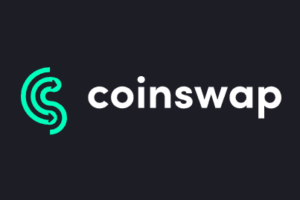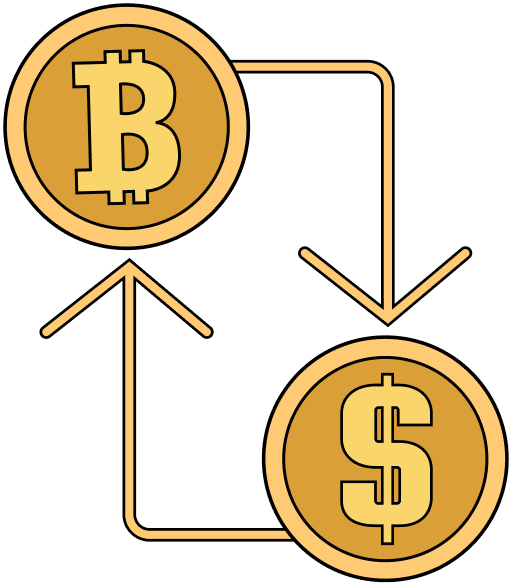
Coinswap logo
Introduction
Coinswap refers to a decentralized exchange mechanism that allows users to trade cryptocurrencies directly, cutting out traditional middlemen. In addition to describing the method itself, the term is often used to identify specific platforms that implement this swapping logic, especially using atomic swap protocols. Its core purpose is to offer users a more secure, anonymous, and censorship-resistant way to exchange digital assets. Unlike Ethereum-based solutions with high gas fees, Coinswap appeals to users aiming for lower costs and higher privacy. For Bitcoin users especially, who increasingly value privacy-preserving tools, Coinswap is emerging as a relevant and forward-looking technology.
This article explores the core ideas behind Coinswap, its technical structure, development path, and its impact within the crypto ecosystem.
DeFi and the Rise of Peer-to-Peer Exchanges
Decentralized Finance, or DeFi, aims to replace traditional financial infrastructure with blockchain-based alternatives. It removes reliance on centralized entities like banks or exchanges, instead offering services that run via smart contracts. Coinswap fits into this ecosystem by enabling token swaps without needing custody from third parties.
Built with DeFi principles in mind, platforms that support Coinswap operate via automated market makers (AMMs), which allow trades to happen directly against liquidity pools. These systems balance supply and demand through algorithmic pricing, removing the need for order books or manual matching. Coinswap platforms using AMMs offer users fast access to swaps, often at lower fees than legacy DEX solutions.
Coinswap Space, for example, is built on the Binance Smart Chain (BSC), leveraging the network’s speed and low transaction costs. Its use of AMM architecture makes it more efficient for regular users while supporting a wide variety of tokens.
Coinswap: How It Works Under the Hood
The core structure of a Coinswap exchange relies on AMM protocols. Users contribute crypto assets to liquidity pools, and others swap assets directly against these pools. Each contribution is rewarded with liquidity provider (LP) tokens, which track the user’s share of the pool and entitle them to a portion of the fees generated by trades.
One of the notable components of Coinswap platforms is the smart routing system. This feature helps users find the most optimal trading path between assets, minimizing slippage and improving final pricing. Instead of always routing trades directly, smart routing checks multiple possible pairs and paths, often resulting in better rates.
Users can also create custom liquidity pools. This makes it easier to list new tokens, bootstrap new markets, and improve access to niche assets. By decentralizing not just trading but also pool creation, Coinswap enhances participation and innovation.
Comparing Coinswap with Traditional DEXs and CoinJoin
While Coinswap resembles DEXs in that it facilitates non-custodial trades, its use of atomic swap principles also gives it a privacy angle similar to CoinJoin. The distinction is key.
Traditional DEXs often still reveal the trading path on-chain. Although they don’t hold your assets, blockchain data can expose trading behavior, wallet activity, and timing. Coinswap, in some implementations, takes this a step further by hiding the connection between sender and receiver using smart contracts and timing mechanisms. This obfuscates the trail and makes it harder for analytics tools to trace the flow.
CoinJoin, by comparison, mixes several users’ coins in a single transaction, making it difficult to tell which input corresponds to which output. Coinswap can hide swaps across multiple blocks or transactions, giving it a stealth advantage in terms of chain analysis resistance.
The two approaches are complementary: CoinJoin is often used for mixing funds, while Coinswap is better suited for swapping assets in a way that preserves privacy across different types of transactions.
Security and Trust Models
One of the strengths of Coinswap lies in its trust-minimized structure. Through smart contracts, participants are protected from fraud or default. Hash Time-Locked Contracts (HTLCs) are often used to enforce strict conditions: either both parties follow through with the swap, or the contract expires and funds are returned automatically.
Coinswap’s design avoids single points of failure and makes attacks like front-running or price manipulation harder to execute. In some implementations, fidelity bonds are used to reduce the risk of denial-of-service (DoS) attacks, requiring actors to lock up value as a guarantee of honest behavior.
These features make Coinswap attractive for privacy-conscious users who don’t want to depend on centralized servers, matching engines, or custodial wallets.
Ecosystem and Active Projects
While the concept of Coinswap has been around for years, only recently have concrete implementations started appearing. Developer Chris Belcher helped revive interest in Coinswap around 2020 with proposals focused on enhancing Bitcoin’s privacy layer.
Key players and projects experimenting with Coinswap ideas include:
-
Coinswap Space: Built on BSC, this platform supports AMM-based swaps with a focus on low fees, high throughput, and a broad range of tokens. It offers yield farming and pool creation for community-driven projects.
-
Belcher’s Coinswap prototype: This initiative seeks to integrate Coinswap into Bitcoin wallets, using existing Bitcoin scripting and UTXO models to enable stealthy, cross-user swaps.
-
JoinMarket (potential future integration): Although primarily focused on CoinJoin, JoinMarket’s developers have explored the idea of expanding into Coinswap territory to enhance functionality.
-
Academic efforts: Ongoing research continues to evaluate how Coinswap can be scaled, optimized for mobile, and integrated with Lightning Network or Layer 2 systems.
These varied initiatives show the adaptability of the Coinswap model across different chains and use cases.
Challenges and Adoption Barriers
Despite its promise, Coinswap adoption is still limited. There are several reasons for this.
First, complexity. Setting up a Coinswap is more technically involved than using a typical wallet or exchange. Smart contract interactions, timing locks, and manual coordination can make it intimidating for average users.
Second, network effect. Coinswap protocols need other participants ready to swap at the same time, or liquidity suffers. Without broad usage, the privacy benefits also decline because low activity makes the swaps easier to identify.
Third, regulation. Tools that emphasize privacy often raise red flags in certain jurisdictions. While Coinswap doesn’t inherently break any laws, its association with anonymity can create compliance hurdles for platforms that wish to integrate it.
Still, these are solvable issues. Better user interfaces, wallet integrations, and community education could go a long way in making Coinswap more accessible and trusted.
Outlook and Development Potential
Looking ahead, Coinswap is well-positioned to fill a growing need in crypto: private, efficient, and decentralized trading. As global interest in privacy rises, tools like Coinswap offer an alternative to the heavily monitored world of centralized exchanges.
Future versions could integrate with multi-chain platforms, Layer 2 scaling solutions, or privacy layers like Taproot on Bitcoin. There’s also potential for use cases beyond swaps, such as escrow, lending, or contract execution between anonymous parties.
As the ecosystem matures and user interest in privacy tools increases, Coinswap’s approach could become a central part of how users interact with blockchains.
Conclusion
Coinswap offers a decentralized and privacy-focused way to swap digital assets without relying on centralized entities or revealing transaction links. Whether used within Bitcoin or smart contract platforms like Binance Smart Chain, its flexibility and security make it a unique tool in the DeFi space.
With the right support from developers and community members, Coinswap could help reshape how people trade, protect privacy, and interact with blockchain networks. As demand grows for censorship-resistant tools, Coinswap may find its place as a vital part of the decentralized economy.














 Twitter
Twitter
 Telegram
Telegram
